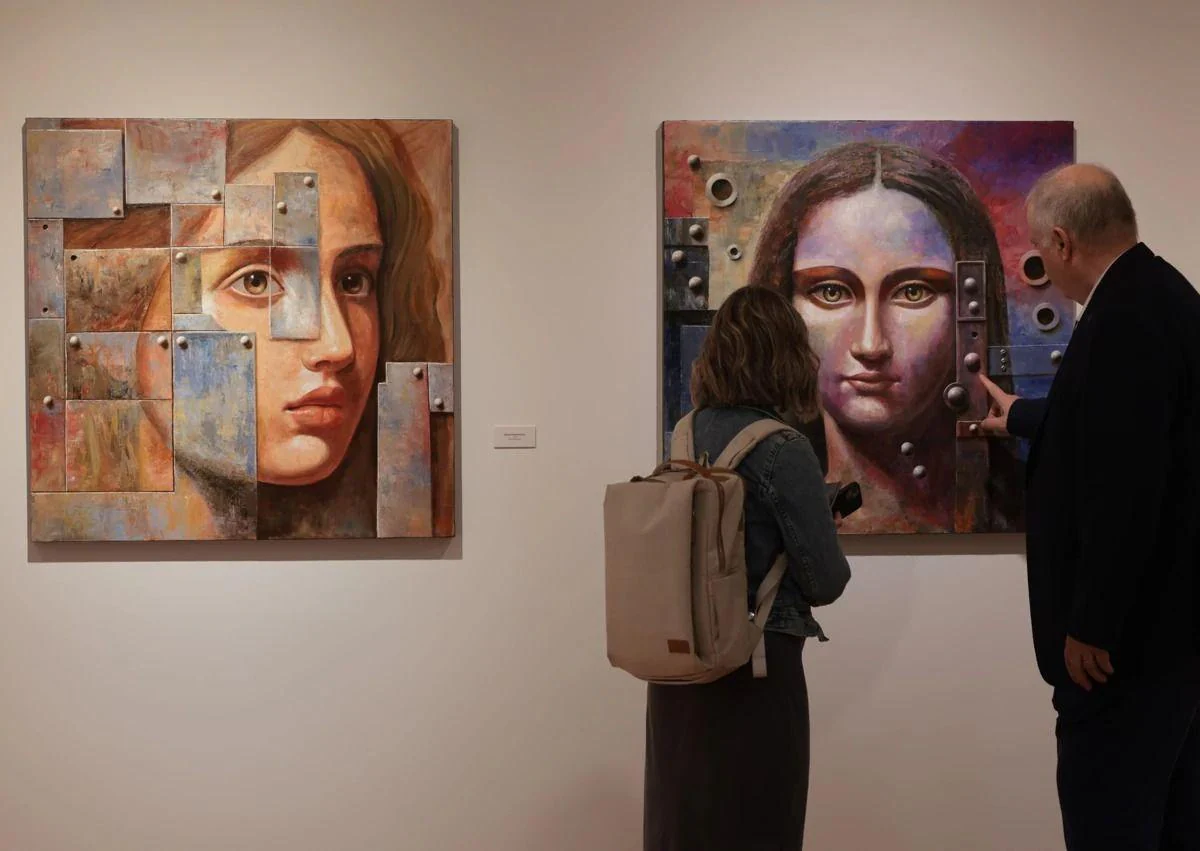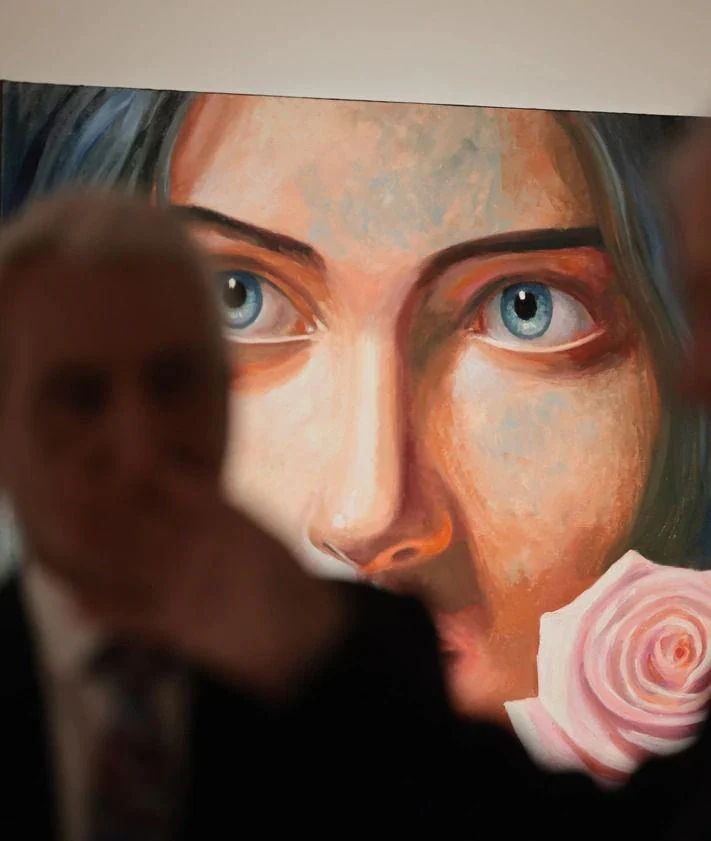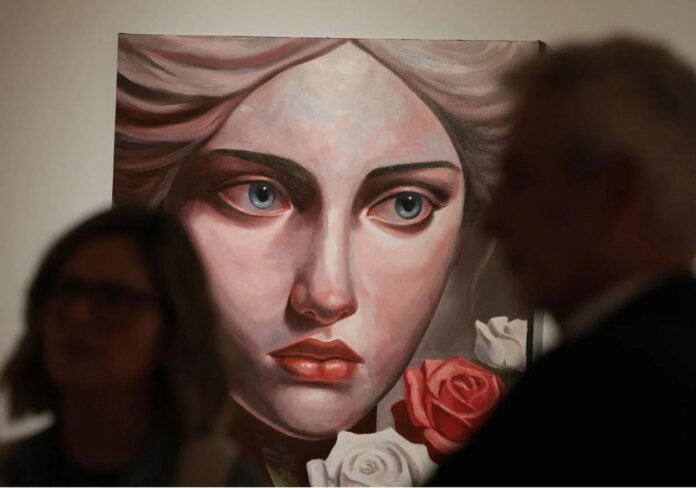Friday, October 18, 2024, 4:19 PM
He likes to explain the creative process, the peculiarities of each work of art and his innovative working method. Fernando Núñez’s eyes shine when he talks about his paintings. And what is so clearly visible in nature, a short distance from him, is extremely difficult to capture in an oil portrait. No model could hold that emotion in their gaze for so long. It doesn’t matter if it’s a look of sadness, memory, anticipation, surprise or fear, no one could hold that emotion with just their eyes and without changing the rest of their face. A human cannot do that – at least not easily – but artificial intelligence (AI) can.
Fernando Núñez, artist by profession and lawyer by profession, looks AI in the eye in his new exhibition at the Centro Cultural MVA. There are 22 portraits on display, painted with traditional materials, to which he adds an extra step earlier in the creative process with the help of AI tools. Miradas Cruzadas can be seen in the rooms of the gallery in Calle Ollerías until November 29.
As the title of the exhibition suggests, Núñez shares this obsession that recurs in art history, the obsession with conveying feelings through and with the eyes. “The look is the best form of nonverbal communication,” he says. Here there are stray looks and others that focus directly on the viewer, also expressions of calm and others that convey a sense of unease, and some appear scared while others look expectant. Strangely enough, some of them correspond to real people.
“But there is not a single part of the painting that is not done with brush, spatula, pigments, paint. That is to say, with conventional means,” he points out. Núñez relies only on technology in the initial stages of a painting, which was previously accomplished through sketching and “the patience of models.” “Artificial intelligence has helped me generate a full range of feelings without having to resort to humans,” he explains.
The artist uses various AI applications in which he defines and contextualizes what he is looking for through his verbal instructions, or cues as they are often called. For example: he will ask for the image of a woman’s face, with light-colored eyes, between 25 and 35 years old, with light coming in from the top of the image, with a sad look on her face.


While AI’s response is immediate, the outcome the artist is looking for is not so imminent. The requirements must be much more precisely tailored to ‘control’ the technology and not to ‘hallucinate’ it. “I took hundreds and hundreds of images of it and in the end I managed to capture what a look should have, so that there’s something missing, so that it’s thought out, so that it’s reflective.” His reasoning is that it is not just about the distance between the pupils or the focus of the eyes’ attention, it is the whole matter of the position of the face and the angle to which the gaze converges. “And that is something else that AI has given me,” says Núñez.
AI takes care of the initial stages of creating art that was previously captured in a sketchbook and involved a model posing for hours
After that phase comes the craft: his skill with the brush and his ability to wrap every perfect, flawless face that AI throws at him with his own vibe. As Francisco Cabrera (an academic from San Telmo and curator of the exhibition) explains, there are three main groups of images: with flowers, with spheres and with metal elements, a typical feature of this artist’s work. Each of these affects the color and light of the painting, giving it a different character. In Joven de los 6 Claveles Rojos, one of the few portraits where the subject looks directly at the viewer, it is these flowers that determine the tone of the piece. Similarly, in Efebo Heterocrómico y Esferas it is the metallic tone that dominates the entire composition.
His style
Núñez does not in any way present the synthetic faces produced by AI. He categorizes them into different looks, such as Mirada asimétrica, or transforms them into machines in Mirada Perdida y Metalizada or in Perfil Híbrido. In Nostalgia and Caroscuro con Rosas he gives them a very candid look surrounded by flowers.
He also revises classical works of art and brings them into his own domain. This happens with his Pseudo-Gioconda, where the Mona Lisa appears surrounded by metal rivets of different sizes, and also in Mirada Renacentista, where he builds a modern structure of metal plates on top of a face that harkens back to classical serenity. His canvases always have a square format, so that the image can be clearly seen at a glance, in one movement.
In summary, Miradas Cruzadas proposes a journey of introspection, “a world where silence and the depth of glances communicate more than words”, says Manuel López Mestanza, Provincial Delegate for Culture in Malaga. A QR code is available in each room that explains the unique features of each piece.
This isn’t the first time Núñez has collaborated with artificial intelligence to create art. He did this a little over a year ago for his exhibition IA: Pigmentos en Tránsito, at the MAD (Provincial Art Museum) in Antequera, but that is now outdated. “AI is evolving so quickly that if I tried to paint these paintings today, they would be different from the paintings hanging today. It’s like a horse race without a finish line,” says Núñez. He describes himself as a “doctor of law turned painter, or a painter who navigates the complex twists and turns of law in robes.” Whatever it is, as his friend Cabrera says, “he does both things masterfully.”





